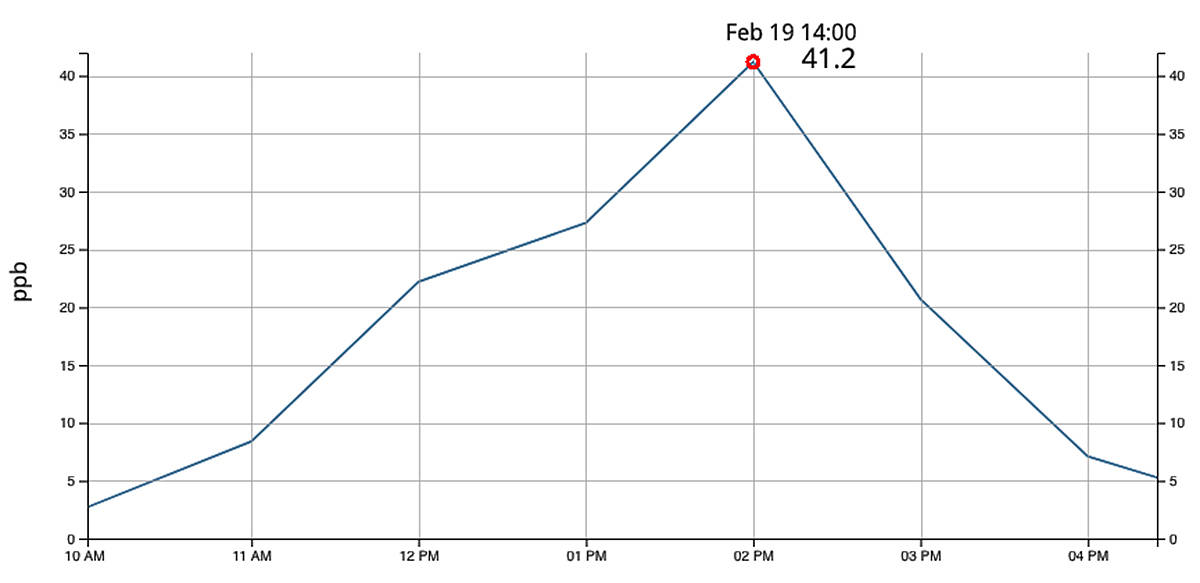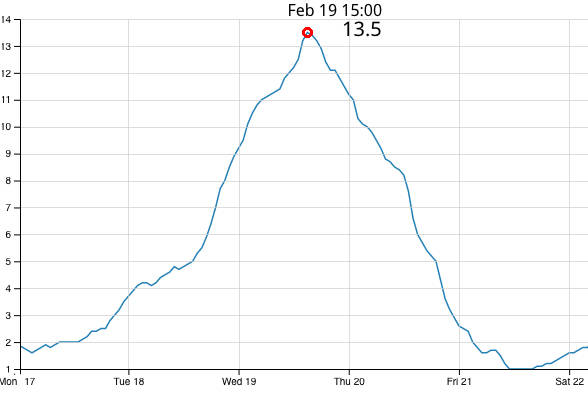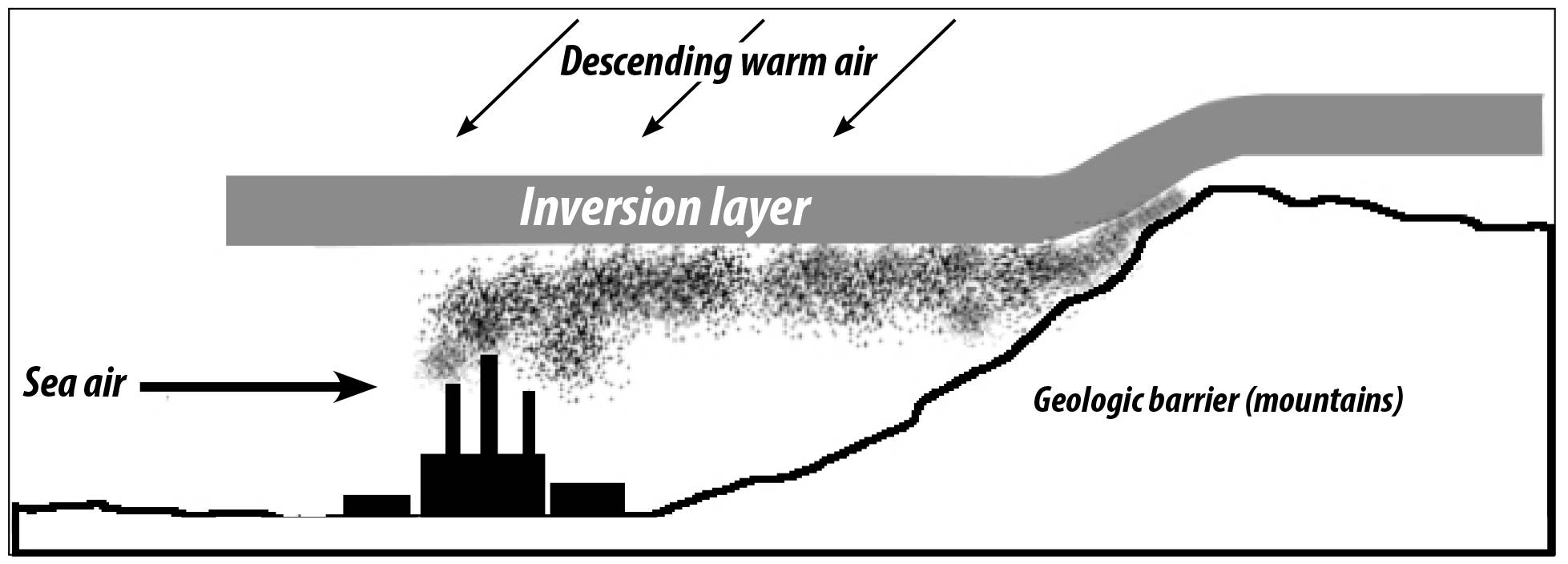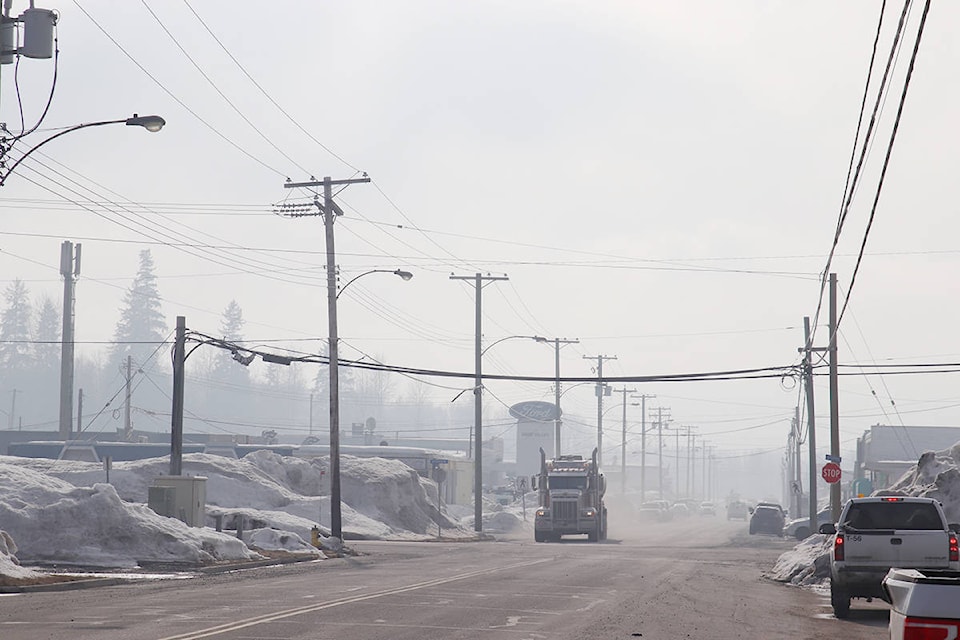Kitimat Fire and Rescue had to step in once again to stop a slash and burn operation that left the Service Centre blanketed in smoke last week Wednesday.
Fire chief Trent Bossence wouldn’t say which company was responsible for the smoke which caused burning eyes and coughing on Wednesday, February 19, but confirmed that the company did have a burn permit.
He said Fire and Rescue had received “a couple of complaints” and had contacted the company before the Northern Sentinel called.
“We contacted the company responsible and requested that they discontinue burning until conditions were favourable to support the burning event,” said Bossence.
He also confirmed that the venting index for the day was not favourable for slash and burn operations.
According to the provincial environment ministry’s website, “the burning of woody debris outdoors is only permitted when the forecast ventilation index is sufficient to disperse smoke.”
The index is a measure of atmospheric turbulence and low-level winds, essential for dispersing smoke, and is measured on a scale of one to a hundred.
READ MORE: We know about the smoke - fire chief
Before a slash pile can be set alight the index must be predicted to be both Good (55-100) for the afternoon that the burn is to occur, as well as Fair or Good (34-100) the following afternoon.
The venting index for Terrace and Kitimat on Wednesday, February 19, at 7:00 a.m. was Poor (10) with a wind speed of only 3 km/h
The index that afternoon was Poor (28) for 4:00 p.m. and the index for Thursday at 7:00 a.m. was again Poor (18) with a wind speed of only 14 km/h.
What’s more, the venting index for Monday and Tuesday was equally unsuitable for burning operations, the venting index mostly Poor, between 2 and 18, with a wind speed on Tuesday afternoon of zero.
VIDEO: The Service Centre receives its fair share of smoke
A low inversion* and little dispersion of smoke resulted in the 24-hour PM2.5** reading to peak at 13.5 parts per billion (ppb) at 2:00 p.m. on Wednesday – the province’s air quality objective (AQO) for PM2.5 for B.C. is 25 ppb.
The 24-hour PM2.5 AQO is used to guide decisions on whether or not the environment ministry issues an air quality advisory.
Not surprisingly, the sulphur dioxide (SO2) monitoring network detected an increase in the SO2 levels over Kitimat.
The environment ministry’s SO2 alert system issued its first warning at 1:00 p.m., with a level of 38.9 ppb, rising and peaking at 2:00 p.m. with a level of 43.1 ppb.
A Rio Tinto spokesperson said the raised SO2 level was not as a result of a change in smelter operations.
“The raised level was most definitely related to wind conditions, possibly an inversion,” said the spokesperson.
* An inversion occurs when warmer air is held above cooler air, trapping air pollution such as smog, close to the ground.
** Fine particulate matter is an air pollutant. Solid or liquid particles floating in the air are called particulate matter. The smallest of these particles—those that are 2.5 microns or less in diameter, or less than 1/20th the width of a human hair—are called fine particulate matter (PM2.5).
Fine particulate matter comes from many natural and human activities, including wildfires and emissions from prescribed burning, forestry operations, residential woodstoves, and transportation.1
Fine particulate matter can be harmful to humans. Exposure to fine particulate matter has been associated with several serious health effects including heart and lung disease.
Both short-term (24-hour) and longer-term (a year or more) exposure to fine particulate matter can have negative effects on human health.



